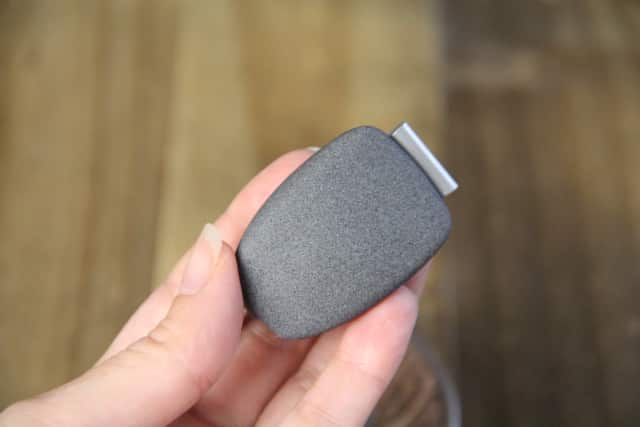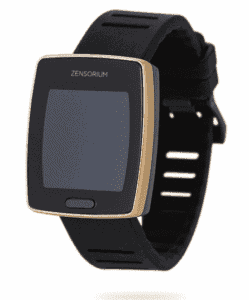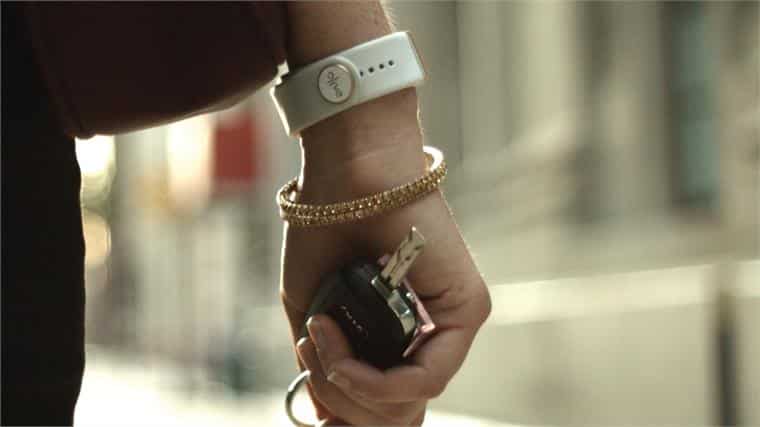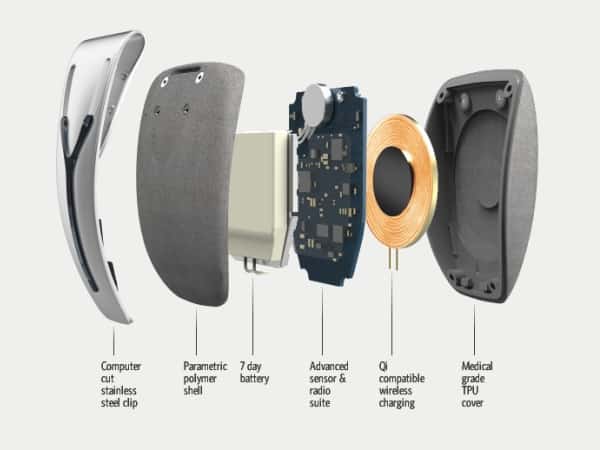 Wearables are a lot like our Smartphones – great at some things but not really all that smart.
Wearables are a lot like our Smartphones – great at some things but not really all that smart.
Our wearables function as recording devices, counting our steps, measuring our physical activity – but fail to capture our moods and stress levels. In the over-hyped market of fitness trackers, that’s about to change.
Wearable Tech and our Emotions
A new range of emotional wearable tech is coming that not only record your physical activity but continually assess your emotional state:
Spire – a small stone that clips onto your pants or bra and syncs with a phone app – stands out for attending to the mind as much as the body. Being, a watch-like mindfulness device from the Asian company Zensoriumin, also tracks mood using a sensor that measures heart rate variability and blood pressure.
There are others in this space, including the Muse Brain Sensing Headband, which I’ve been using – that actually measure your brain activity to help you focus and relax. But unlike Spire and Being, Muse is not a device you’ll be wearing all day long.
You’re a Little Tense Today
According to the American Psychological Association, our stress levels have been trending downward (the economy was doing us in a few years back), but they’re still too high, and we don’t manage stress well. Worse yet, we’re not even all that aware of it. And while you could take the APA’s online Stress Smarts Quiz, you’re not going to do that while driving (I hope) or while getting ready for a meeting.
An online quiz? In a world of wearable tech, that’s so old school.
Spire and Being
This is where emotional wearable tech devices like Spire and Being come in.
Spire (pictured above) looks like a piece of jewelry you might buy in the southwestern United States, a small gray stone with a metal clip attached. I swear I’ve seen something like this years ago at the plaza in Santa Fe. But this is a “stone” with a digital difference.
You clip it inside your waistband or your bra, basically anywhere on your clothing that keeps it pressed next to your skin. Packed with technology, Spire tracks the consistency of your breathing, counts your steps, and how long you’ve been standing or sitting down.
As Spire notes:
The average person is physically active only about 14% of the day; we aim to go beyond conventional activity trackers and tap into the other 86% of your day.
It’s a clip it and forget it kind of device as Spire won’t send you minute-to-minute notifications (that might stress you out even more). But when it senses that you’ve been tense for an extended period, it will tell you (through your Smartphone) to slow down and focus on your breathing. Which is one of the best things you can do when you need to calm down.
Being (which is in pre-order now) from Zensorium.com takes a different approach, using both a continuous  heart rate monitor and an accelerometer that gathers data when you’re awake or asleep.
heart rate monitor and an accelerometer that gathers data when you’re awake or asleep.
Designed to be worn like a smartwatch, it measures the quality of your sleep, including both NREM and REM sleep cycles.
Measuring your heart rate and blood pressure, it maps your moods into one of four different zones – stressed, excited, normal, or calm. And over the course of your day, it alerts you when it senses changes in these indicators – helping you focus on trying to relax and stay calm.
The Challenge of Measuring our Emotions
The market will be the final judge on whether these devices work or not. While measuring breathing and heart rates is one way to gauge stress levels, it’s not perfect as it’s still looking at physical indicators as a reflection of your emotional state.
And in so far as this approach works, I’d be apprehensive about Apple if I was behind Spire or Being. It wouldn’t take much for Apple (or an App developer) to add these features to the next version of the Apple Watch.
Not everyone has been successful in this arena – Olive Labs was working on an easy-to-use, inexpensive wearable that measures your stress level. It was a hugely successful Indiegogo campaign, reaching 181% of its funding level, and then abruptly shut down at the end of May 2015.
Despite the beautiful design and functionally of their wearable band, the funding was apparently not enough to complete development.

Wearing your Heart on your Sleeve
Spire and Being are only a taste of what’s to come. Or to put this another way, if you are an extrovert, you’re going to love the future.
Research is underway on Wearable Tech that will register and display your emotions through your jewelry and even your clothes, giving you the option of making your moods completely public:
At Microsoft Research, principal research designer Asta Roseway and her team are working on wearables that don’t just give people insight into their emotions, but also allow them to share findings with others. Take a butterfly pin called MoodWings that flutters when your stress level rises, or a scarf that can heat up when you’re sad and play cheerful music when you’re happy.
Roseway and colleagues are connecting to each other through their data, getting notified when someone feels more stress than usual.
It may sound utterly far-fetched that we would let others know when we’re stressed out, making us feel more vulnerable. But changing notions of privacy and personal space may drop our inhibitions here.
Social or Emotional Media?
A decade ago, no one would have thought to tell the world what they see (Instagram), where they are (FourSquare), or what they were thinking at the moment (Facebook and every text message app ever). It might just become a badge of courage to reveal your emotional state, or perhaps so commonplace to display your mood that no one will give it a second’s thought.
We talk a lot about the sharing economy, but it may come to mean something that goes far beyond sharing goods and services – we may be sharing our moods over the course of our day. Connected to others, our friends may tell us to calm down before we even sense our own elevated stress levels.
You can imagine how this might change the dynamics of our social life: our behavior in meetings, job interviews, public speaking, education, even our relationships – and you could add a good deal more to this list. Just be ready, as a whole lot more wearable tech is coming in this arena.
Now, now . . . calm down.
Emory Craig is a writer, speaker, and consultant specializing in virtual reality (VR) and artificial intelligence (AI) with a rich background in art, new media, and higher education. A sought-after speaker at international conferences, he shares his unique insights on innovation and collaborates with universities, nonprofits, businesses, and international organizations to develop transformative initiatives in XR, AI, and digital ethics. Passionate about harnessing the potential of cutting-edge technologies, he explores the ethical ramifications of blending the real with the virtual, sparking meaningful conversations about the future of human experience in an increasingly interconnected world.

